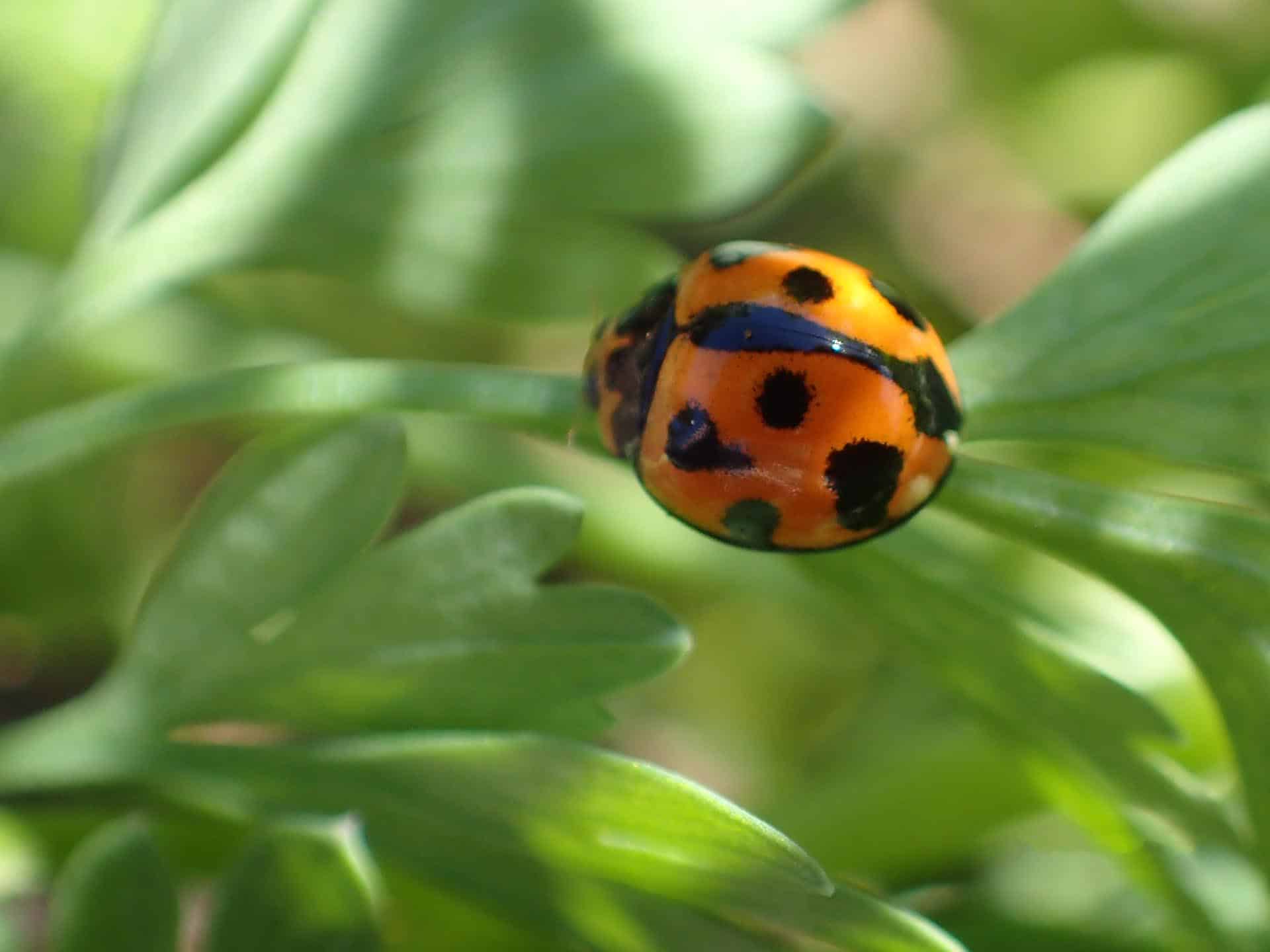It is difficult to tell the males and females apart (without the aid of a microscope), although generally, the females are larger.
Over spring and summer the female lays her eggs, usually ten to fifteen, on the underside of leaves. They are often laid amongst a ready food source, such as aphids and mites, for the larvae to feed on after they hatch. The larvae will grow for about ten days moulting and shedding their skins as they grow; then pupate, emerging as an adult after a few days. When they first emerge they are soft and do not have any markings.

